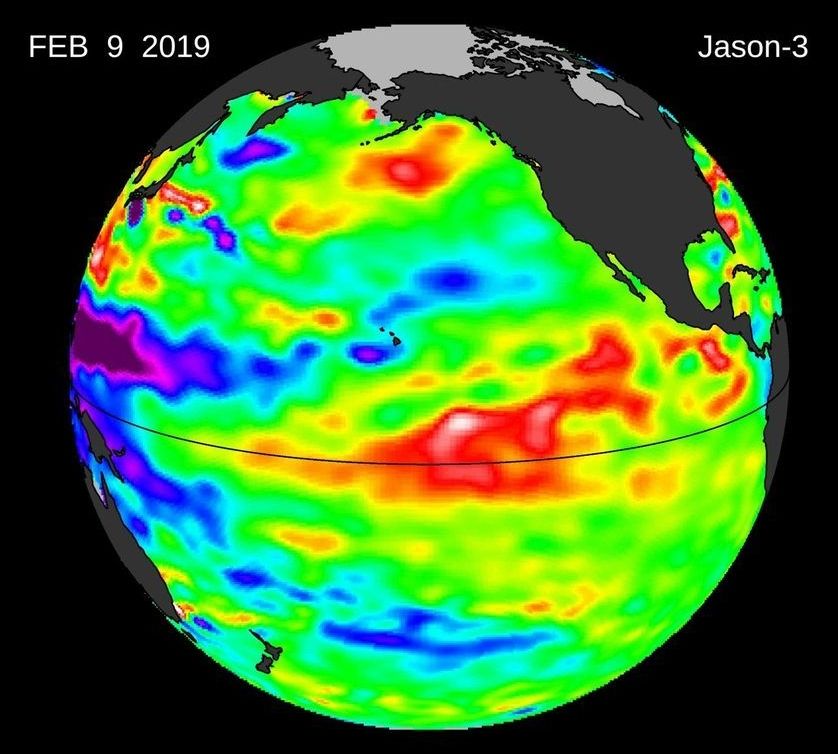Archive for the ‘space’ category: Page 782
Mar 14, 2019
NASA is Everywhere: Farming Tech with Roots in Space
Posted by Michael Lance in categories: food, space
Today is National Agriculture Day! From enabling higher crop yields to maximizing every drop of water for farmers, NASA is working to help transform the agriculture industry. Check out some of the farming tools that have roots at NASA:
Growing plants can be tough, whether you’re on a spaceship or Earth. A special fertilizer made it easier for astronauts on the International Space Station and farmers down below, resulting in just one of the space program’s many contributions to agriculture.
Numerous farming tools have roots at NASA. Over the years, companies large and small have partnered with the agency, honed technologies and delivered innovations to benefit the industry. These are just a few examples:
Continue reading “NASA is Everywhere: Farming Tech with Roots in Space” »
Mar 14, 2019
Uranus smells like farts, astronomers have confirmed — and the discovery indicates there was ‘a big shakeup’ early in the solar system
Posted by Michael Lance in category: space
Uranus’ hydrogen-sulfide gas is also extremely toxic.
Scientists had suspected that Uranus had clouds of hydrogen sulfide, a compound that gives rotten eggs and flatulence their pungent smells. But researchers couldn’t be certain until new Gemini Observatory telescope observations.
Mar 13, 2019
Made In Space Archinaut Program Reaches Major Milestone as Development Continues
Posted by Caycee Dee Neely in categories: robotics/AI, space
The Made In Space Archinaut program has accomplished another exciting milestone. During recent testing at Northrop Grumman’s Space Park facilities in Redondo Beach, California, we successfully operated Archinaut’s core additive manufacturing and robotic assembly technology suite in a space-like environment. These operations took place in a thermal vacuum (TVAC) chamber, simulating the extreme temperature and vacuum pressure of what a satellite in Low Earth Orbit (LEO) would be exposed to. The completion of this ground-based testing raises the technology readiness level (TRL) of the Archinaut platform and demonstrates that core Archinaut technologies are now prepared to operate in space.
The Archinaut platform looks to provide mission critical, space-optimized structures on orbit that would otherwise be too large to launch, using on-demand, adaptable manufacturing. With the marriage of additive manufacturing and robotic assembly, Archinaut enabled structures can range from:
Will there be another El Niño this 2019? Check out these data from the TOPEX/Poseidon and Jason missions of NASA!
Mar 12, 2019
NASA Clears “Dream Chaser” Space Cargo Plane For Full-Scale Production
Posted by Quinn Sena in categories: space, transportation
Watch out space, there’s a new commercial cargo carrier entering the race.
Sierra Nevada Corporation (SNC) has been given the go ahead from NASA to begin full-scale production of it’s “Dream Chaser” commercial space cargo plane. Scheduled to make its first mission in 2020, the company announced on December 18 that it had cleared the last milestone in its Commercial Resupply Services 2 contract. Now the company is able to move ahead with the full-scale production of the carrier which will be used to deliver cargo to the International Space Station (ISS).
Mar 12, 2019
NASA’s Stunning Image: Supersonic Shockwaves Smashing Together
Posted by Quinn Sena in category: space
Mar 12, 2019
Japan’s moon rover will be made by Toyota
Posted by Quinn Sena in categories: space, transportation

https://youtube.com/watch?v=1kd2nFHAAtU
The team hope to deploy the vehicle to the lunar surface in 2029.
Proposed NASA — National Aeronautics and Space Administration lunar gateway #NASA #NASAMoonToMars #Moon2Mars
Mar 12, 2019
JAXA: Tokyo
Posted by Klaus Baldauf in categories: robotics/AI, space, sustainability, transportation
Japan, March 12, 2019—The Japan Aerospace Exploration Agency (JAXA) and Toyota Motor Corporation (Toyota) agreed today to study the possibility of collaborating on international space exploration. As a first step, JAXA and Toyota agreed to further cooperate on and accelerate their ongoing joint study*1 of a manned, pressurized rover*2 that employs fuel cell vehicle technologies. Such a form of mobility is deemed necessary for human exploration activities on the lunar surface. Even with the limited amount of energy that can be transported to the moon, the pressurized rover would have a total lunar-surface cruising range of more than 10,000 km.
International space exploration, aiming to achieve sustainable prosperity for all of humankind by expanding the domain of human activity and giving rise to intellectual properties, has its sights set on the moon and Mars. To achieve the goals of such exploration, coordination between unmanned missions, such as the recent successful touchdown by the asteroid probe Hayabusa2 on the asteroid Ryugu, and manned missions, such as those involving humans using pressurized rovers to conduct activities on the moon, is essential. When it comes to challenging missions such as lunar or Martian exploration, while various countries are competing in advancing their technologies, they are also advancing their cooperative efforts.
JAXA President Hiroshi Yamakawa had this to say today about the agreement between JAXA and Toyota: “At JAXA, we are pursuing international coordination and technological studies toward Japan’s participation in international space exploration. We aim to contribute through leading Japanese technologies that can potentially generate spin-off benefits. Having Toyota join us in the challenge of international space exploration greatly strengthens our confidence. Manned rovers with pressurized cabins are an element that will play an important role in full-fledged exploration and use of the lunar surface. For this, we would like to concentrate our country’s technological abilities and conduct technological studies. Through our joint studies going forward, we would like to put to use Toyota’s excellent technological abilities related to mobility, and we look forward to the acceleration of our technological studies for the realization of a manned, pressurized rover.”

















